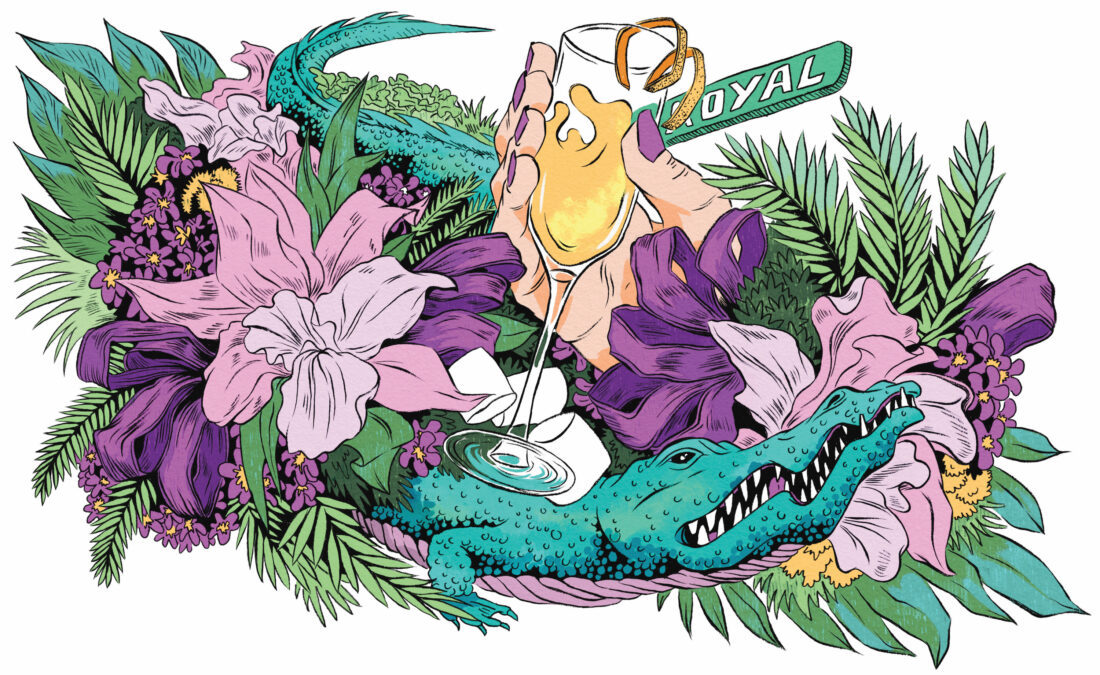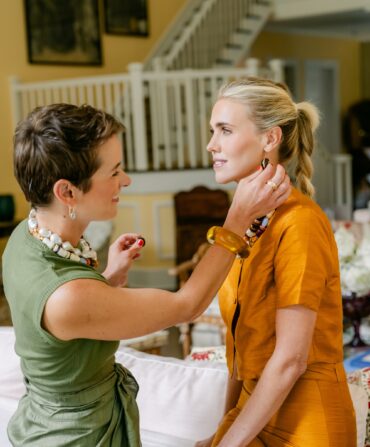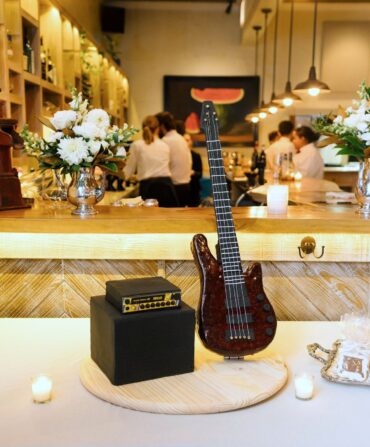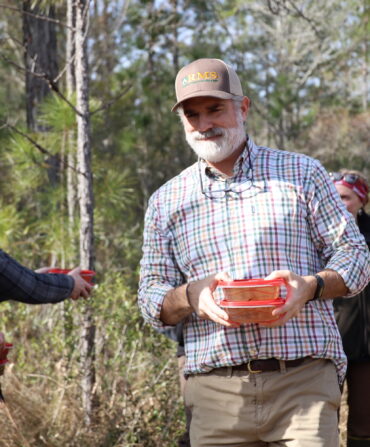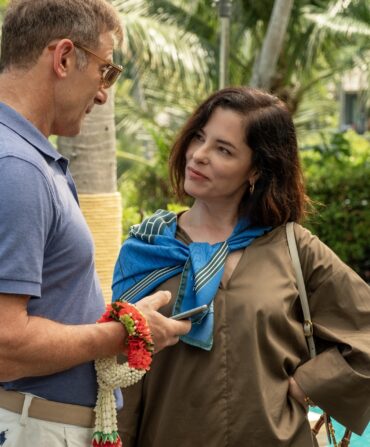Back for my fortieth birthday, I asked my family to meet me in New Orleans, feed marshmallows to a nine-foot gator on a swamp tour, and drink French 75s at Arnaud’s. And I wanted the women to wear corsages.

My husband recalls everything except the corsages. He asks, “Did I buy them in New York City and bring them on the plane?”
“No,” I say. “You found a New Orleans florist thanks to a Southern hairdresser who worked where I got my roots done on Orchard Street. You ordered shoulder corsages, but I wore that loose drapey dress with the chain belt. The material wasn’t strong enough to hold up the corsage, so I had to change into that stiff denim dress and anchor the flowers to my bra strap.”
“I don’t remember any of that,” my husband says, “but I remember making a nice toast your father liked.”
“You did? What did you say?”
“Something about being grateful for being married to you and wanting to stay married to you. You don’t remember?”
“No,” I say. “I remember the corsages.”
For decades, Southerners have marked occasions with corsages: Easter, Mother’s Day, Grandmother’s birthday at the good mall’s meat-and-three, and weddings.
In Steel Magnolias, M’Lynn fluffs the blush and bashful ribbons of Shelby’s honeymoon corsage. Shelby says, “Corsages are pretty stupid when you think about it, aren’t they?” But M’Lynn ignores her question because she is older and wiser and knows that corsages—like the movie moments they hallmark—are fleeting, romantic. The stuff of dances and dreams.
My homecoming chrysanthemums in 1980s Alabama were as big as airbags, hot-glued with pipe cleaner school monograms, and dangling with so many ribbons it looked like my date had mugged a maypole. Who needed a chaperone to cut in on a gymnasium slow dance when we had a corsage the size of Wilson the Volleyball between our church clothes? Each October, my left breast swelled from an A cup to a double D with the stick of a pin.
My friend in Florida says, “A homecoming corsage was a résumé for your chest.” If your boyfriend was on the football team, you had a football. If you were a cheerleader, you had a megaphone. (I don’t recall if there was a symbol to represent that I was elected AP Latin Club sweetheart.)
For prom night, though, we went dainty and wrist. Our dresses were strapless or spaghetti-strapped, and none of us wanted our parents watching our date fumble about our bosoms with the unease of a first-day-on-the-job mammographer. Prom corsages had more baby’s breath than a maternity ward and came in the same clear box that Magnolia Bakery slips a slice of confetti cake into at Bloomingdale’s, which explains why the ASMR of peeling off a piece of Scotch tape and thumbing open plastic snaps still turns me on.
After dances, we preserved our corsages by drying them, pressing them, freezing them, or aerosoling them with enough Miss Breck hair spray to—with a flick of a Bic—burn the house down. My friend in Florida pinned hers to her bulletin board, which was backed with the same Laura Ashley floral wallpaper that blanketed her walls.
Nowadays there’s Instagram to remind us that what happened really happened, so corsages aren’t as popular. They’re also expensive (forty bucks for three decapitated roses), labor-intensive (most florists no longer offer them), old-fashioned (tuxedos are out, suits and Nike Dunks in), and “awkward” (Sissy Spacek as Carrie could have done even more damage without that blood-soaked corsage on her wrist). Teens instead opt for, as my editor calls them, “dumb little bouquets” (which is also what we considered calling this column)—floral fidget widgets to fondle while your mom takes your prom pic with your phone. Retailers call them nosegays or posies. You pose with them, then leave them behind.
But I can’t let go of corsages.
If corsages are a dying art, I resurrected them in New Orleans. Nobody there batted an eye at the orchids pinned to Mama, my sister, and me as we left the Monteleone’s lobby, walked Royal to Bienville, and ate turtle soup under the ceiling fans and chandeliers of Arnaud’s. I’d never have tried this in Manhattan for fear I’d be judged as sentimental and silly, a displaced Blanche Du-Bois. But in New Orleans, my corsage made me feel like my best self: a hothouse flower out on the town, doted on and valued; for one evening, almost home.


